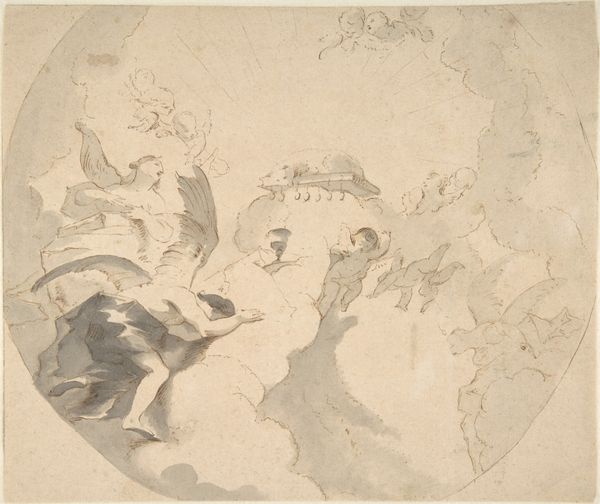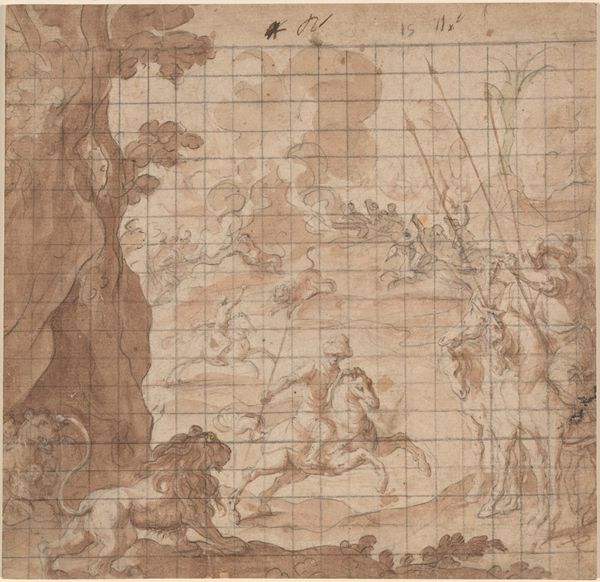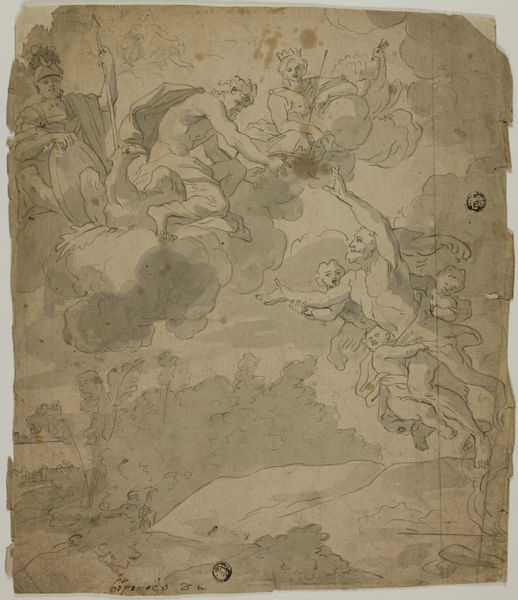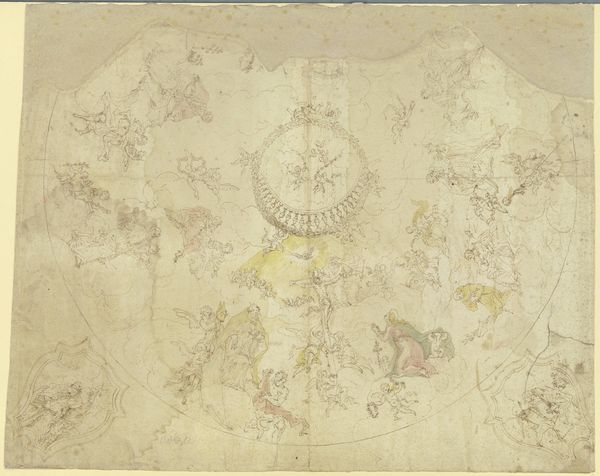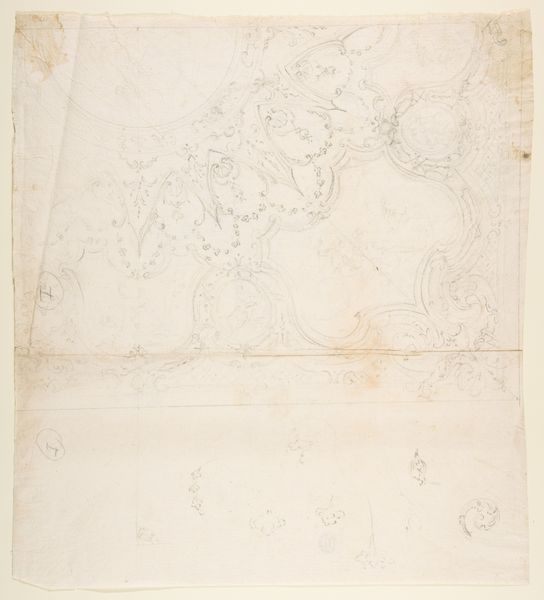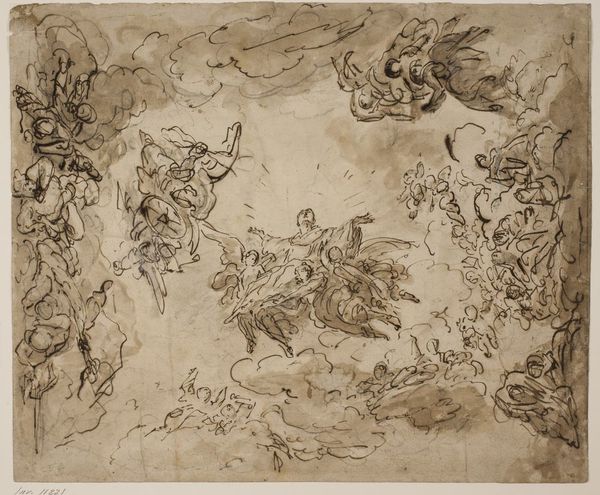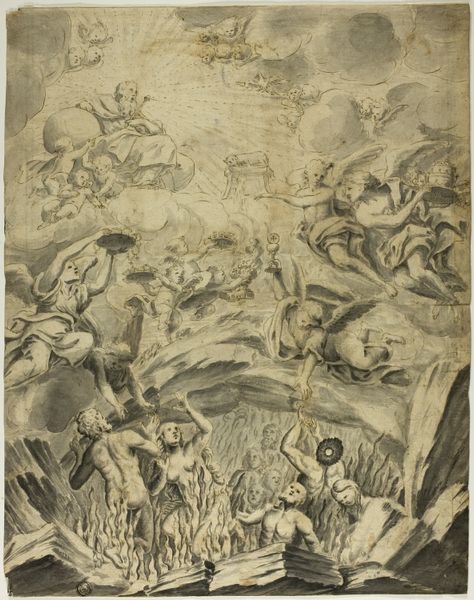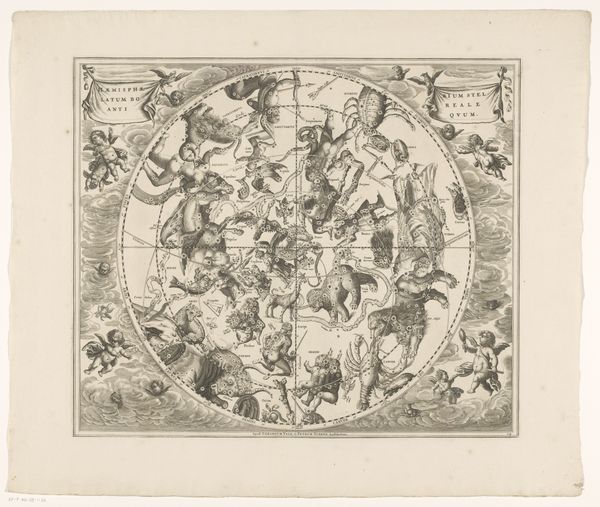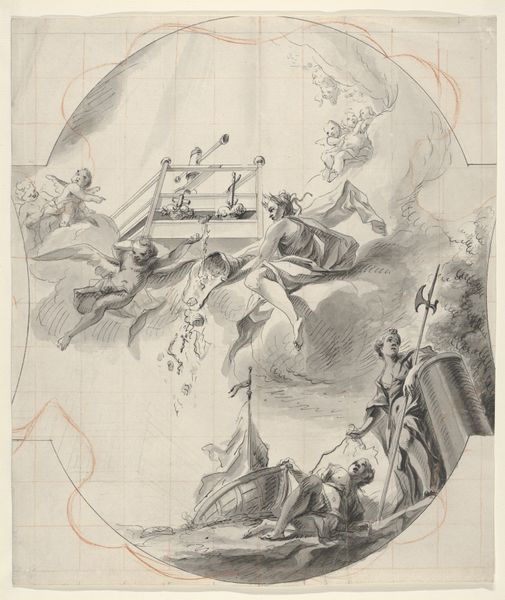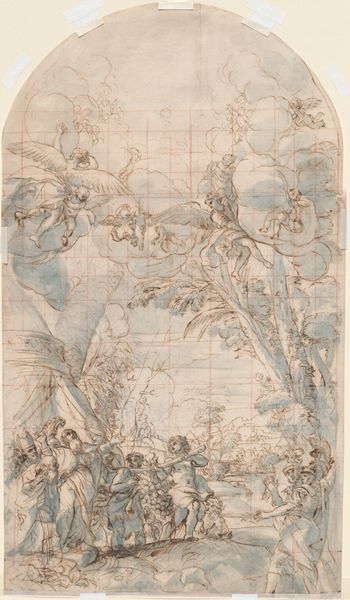
drawing, paper, ink
#
drawing
#
neoclacissism
#
allegory
#
figuration
#
paper
#
ink
#
history-painting
#
watercolor
Dimensions: overall: 71.2 x 49.8 cm (28 1/16 x 19 5/8 in.)
Copyright: National Gallery of Art: CC0 1.0
Pietro Fancelli made this study of Aurora and Apollo in ink and wash sometime in the late 18th or early 19th century. The imagery references classical mythology, aligning with the artistic and intellectual interests of the Neoclassical period. But what I find particularly interesting here is the grid. This tells us that the work was produced as a study for a larger project, most likely a fresco on a ceiling or dome. Grids of this kind were commonly used to transfer a design from paper to the wall. Fancelli and his contemporaries were part of a long tradition of artists who decorated religious and secular buildings with this kind of allegorical painting, helping to shape the cultural and ideological values of the institutions that housed them. If we could identify where Fancelli intended for this work to be installed, we would better understand the cultural function it was meant to serve. To discover more, we could consult archives, letters, and other historical records. Art exists within a social and institutional context, and it’s the art historian’s job to bring that context to light.
Comments
No comments
Be the first to comment and join the conversation on the ultimate creative platform.
